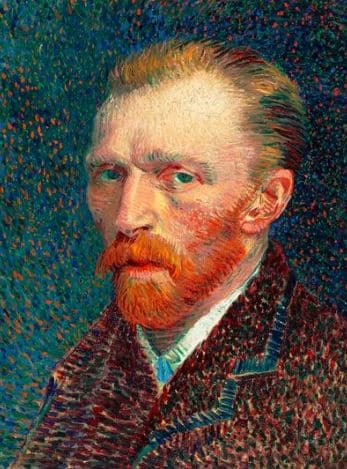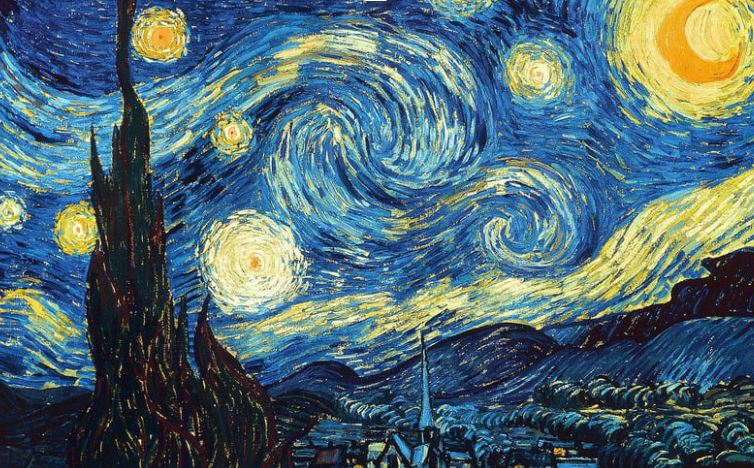 Sherman (2009) states that Vincent Van Gogh is not only universally recognized as among the great artists in history, but also as the tortured genius and crazy painter who sliced off his own ear. Art-loving audiologists from around the world have long been baffled by Van Gogh’s loss of his right pinna and his much-discussed hearing impairment.
Sherman (2009) states that Vincent Van Gogh is not only universally recognized as among the great artists in history, but also as the tortured genius and crazy painter who sliced off his own ear. Art-loving audiologists from around the world have long been baffled by Van Gogh’s loss of his right pinna and his much-discussed hearing impairment.
Vincent Van Gogh, one of the leading Impressionists, also takes his rightful place with other historical figures who have suffered from Meniere’s disease. These include Martin Luther and, more recently, Alan Shepherd, Les Paul, Perry Lee, and many others (Disabled World, 2008).
Although his physicians diagnosed Van Gogh as having epilepsy and madness, Hargrave (2011) writes that the painter was known to have suffered from tinnitus, which he described as ringing or roaring in the ears, as well as impaired hearing and intolerance of loud noises (classic Meniere’s symptoms).
The late 19th century Dutch artist created a number of paintings and drawings that are now among the world’s most expensive and popular works of art. But in his short lifetime, he sold only one of his more than 2000 works, which included 1100 drawings and sketches along with 900 paintings. The Van Gogh Gallery (2011) notes that he produced his finest works in less than three years, using a technique that grew more and more impassioned in brushstroke, in symbolic and intense color, in surface tension, and in the movement and vibration of form and line.
 Van Gogh’s inimitable fusion of form and content is powerful; dramatic, lyrically rhythmic, imaginative, and emotional, for the artist was completely absorbed in the effort to explain either his struggle against madness or his comprehension of the spiritual essence of man and nature. Before becoming an artist, Van Gogh worked as a pastor, art salesman, and teacher. He was a well-known recluse, sometimes spending hours in silence with his bible.
Van Gogh’s inimitable fusion of form and content is powerful; dramatic, lyrically rhythmic, imaginative, and emotional, for the artist was completely absorbed in the effort to explain either his struggle against madness or his comprehension of the spiritual essence of man and nature. Before becoming an artist, Van Gogh worked as a pastor, art salesman, and teacher. He was a well-known recluse, sometimes spending hours in silence with his bible.
Although Prosper Meniere’s 1861 paper outlining the disease that bears his name was published two years before Van Gogh’s birth, the condition was not well known or medically accepted in the late 19th century. Therefore, it’s not surprising that Dr. Peyron, a physician at the St. Remy (France) asylum for epileptics and lunatics, diagnosed Van Gogh with epilepsy and thought this to be the cause of his malady. Based upon this diagnosis, the painter voluntarily admitted himself to the St. Remy facility in May of 1889. He died of a self-inflicted gunshot wound the next year.
Did Van Gogh Have Meniere’s Disease?
For a century he was thought to have been epileptic and was well known as the crazy painter who cut off his own ear. In an effort to correct the record, Arenberg et al. (1990), a group of neuro-otologists, reviewed 796 of Van Gogh’s personal letters to family and friends written between 1884 and his suicide in 1890. Their analysis reveals a man who was constantly in control of his reason, but who suffered from severe and repeated attacks of disabling vertigo, not a seizure disorder.
In their opinion, the clinical descriptions in his letters are those of a person suffering from Meniere’s disease, not epilepsy. The authors point out that Prosper Meniere’s 1861 description of his syndrome (an inner-ear disorder) was not well known when Van Gogh died and that it often was misdiagnosed as epilepsy well into the 20th century. Arenberg et al. concluded that it is highly probable that he suffered from Meniere’s.
These days, we have a much better understanding of this disorder and we realize that Meniere’s is a debilitating disease that has a certain regimen for treatment. In Van Gogh’s time, however, the complications and frustrations created by the symptoms of the disease often caused significant  behavioral difficulties. In Van Gogh’s case, these concomitant behavioral issues were often severe and created an image of a deranged individual capable of cutting off his own ear.
behavioral difficulties. In Van Gogh’s case, these concomitant behavioral issues were often severe and created an image of a deranged individual capable of cutting off his own ear.
The story goes that in the 1880s Van Gogh wanted to begin a painting school in Arles, a town in southeastern France. He hoped that his artist friends Camille Pissaro, Claude Monet, and Paul Gaugin would take part in this enterprise. But only Gaugin agreed to work with him for a time there. When Gaugin was about to leave Arles, legend has it, a frustrated Van Gogh chased him with an  open razor, but ended up cutting off his own right pinna. Of course, this behavior was consistent with the diagnosis of epilepsy and madness, which has been part of popular folklore ever since.
open razor, but ended up cutting off his own right pinna. Of course, this behavior was consistent with the diagnosis of epilepsy and madness, which has been part of popular folklore ever since.
Sherman (2009) cites new evidence that the disturbed Dutch artist made up the story to protect Gauguin, an object of his affection at the time. This evidence suggests that it was Gaugin, an excellent fencer, who cut off Van Gogh’s pinna with a sword during a quarrel.
After an unhappy stay in Arles, Gauguin was planning to move out, leaving his estranged friend behind. Gaugin had walked out of the house with his baggage, his trusty épée in hand. Van Gogh, who had earlier thrown a glass at Gaugin, followed him. As the pair approached a bordello, their row intensified, and Gauguin cut off Van Gogh’s left earlobe with his sword – either in anger or self-defense. Gaugin then threw the weapon into the Rhône River. Van Gogh, meanwhile, delivered the severed ear to a prostitute and then staggered home, where police discovered him the following day, the new account claims.
Samuel (2009) has discovered results from German art historians that indicate the two men both kept a “pact of silence” – Gauguin to avoid prosecution and Van Gogh in a vain attempt to keep a friend with whom he was hopelessly infatuated. The sword is said have been wrapped it in cloth and handed it to a prostitute in a nearby brothel.
“To do good work one must eat well, be well housed, have one’s fling from time to time, smoke one’s pipe, and drink one’s coffee in peace.”
–Van Gogh
References
Arenberg, I; Countryman, L.; Bernstein, L., & Shambaugh, G. (1990). Van Gogh had Meniere’s Disease not epilepsy. JAMA, Vol 264, No 4, pp 491-493. Retrieved from the World Wide Web September 21, 2011.
Baloh, R., (2001). Prosper Meniere and his disease. Arch of Neurol, Vol. 56, No 7, pp1151-1156. Retrieved September 21, 2011.
Disabled World, (2008). Famous people with Meniere’s Disease. Retrieved September 22, 2011.
Hargrave, C., (2011). Health Discoveries: Alternatives to Medicine. Healthdiscoveries.com, Retrieved September 19, 2011.
Samuel, H. (2009). Vangogh’s ear was cut off by friend Gaguin with a sword. Telegraph. Retrieved September 21, 2011.
Sherman, W., (2009). Historians blame Van Gogh’s hearing loss on Gaugin. Animalnewyork.com, Retrieved September 19, 2011.
Van Gogh Gallery (2011). Biography of Vincent Van Gogh. Retrieved February 7, 2018.
About the author

Robert M. Traynor, Ed.D., is a hearing industry consultant, trainer, professor, conference speaker, practice manager and author. He has decades of experience teaching courses and training clinicians within the field of audiology with specific emphasis in hearing and tinnitus rehabilitation. He serves as Adjunct Faculty in Audiology at the University of Florida, University of Northern Colorado, University of Colorado and The University of Arkansas for Medical Sciences.
**this piece has been updated for clarity. It originally published on September 21, 2011






